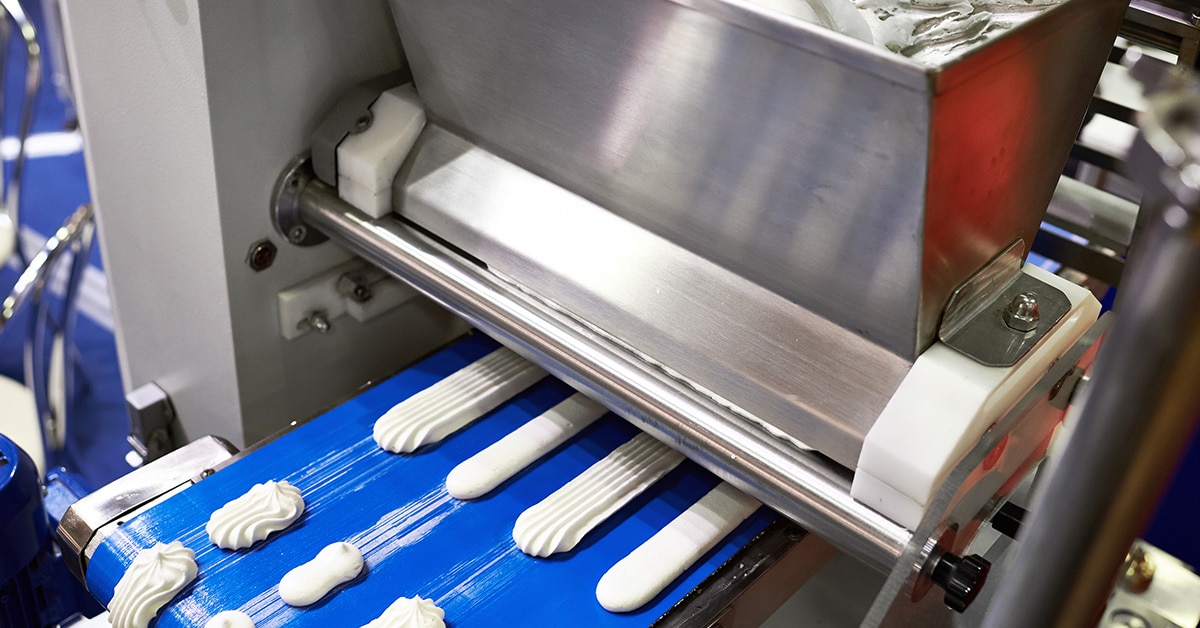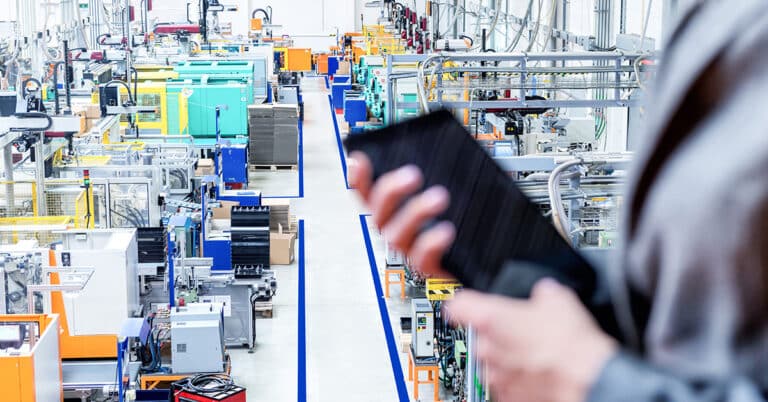Waste costs manufacturers time and money. Material waste during production increases costs to achieve the desired output quality and quantity, while defects cause delays due to the need for additional production runs. Consider recent waste statistics, which found that American companies dispose of 1.33 billion pounds of waste per year.
Calculating waste percentage can help companies identify areas for improvement, reduce scrap and meet sustainability goals. Here’s what you need to know about calculating, applying and tracking waste percentages.
What is waste percentage in manufacturing?
Waste percentage is the amount of waste compared to the total input. It is often classified under one of lean manufacturing’s “seven wastes” — transportation, inventory, motion, waiting, overproduction, overprocessing and defects (TIMWOOD).
In practice, this may be the total amount of food waste, plastic waste, industrial waste, raw material waste, municipal solid waste, energy waste or the additional time required to repeat manufacturing processes if too many defects are produced.
To find waste percentage, use this formula:
Waste percentage = (Amount of waste / Total input) x 100.
How to calculate waste percentage
There are three steps in calculating waste percentage:
Step 1: Determine the total amount of input
Step 2: Measure waste generation during production
Step 3: Use the waste percentage formula noted above
Let’s look at two examples.
Example 1:
Consider a food production company looking to limit wasted food. Analysis of their manufacturing process shows that for every 1,000 pounds of material input, they have 200 pounds of waste.
Waste percentage = (200 / 1,000) x 100 = 20%.
This sets the stage for significant food waste reduction — even small changes in current processes could help contribute to the reduction of global food waste.
Example 2:
Or consider an automaker that discovers for every 500 parts produced, 10 are defective.
Waste percentage = (10 / 500) x 100 = 2%.
While this is lower than the 20% listed above, it still offers room for improvement. Reducing total defects by five would lower the waste percentage to 1%.
It’s also worth segmenting your industrial waste sources to help pinpoint inefficient processes. In practice, this could mean calculating waste on a per-machine, per-shift, or per-material basis.
Tools and technologies to track waste in real time
Measuring waste percentage at a single point in time provides a snapshot of current manufacturing conditions. Measuring this value over time — and in real time — helps companies improve production processes at scale.
Several tools and technologies can help achieve this aim:
- IIoT sensors: Connected sensors let companies track scrap, record cycle times and identify rejected parts.
- CMMS platforms: Computerized maintenance management system (CMMS) software logs key events such as maintenance-induced downtime and time lost to waste and additional production runs.
- MES: Manufacturing execution systems (MES) provide real-time tracking of production metrics.
- Edge computing + AI: Combining edge computing and AI can track patterns of inefficiency and suggest corrective action.
- Visual dashboards: Visual dashboards allow teams to quickly identify waste and pinpoint its source.
Reducing waste once it’s measured
While measuring waste percentages lays the foundation, targeted action is required to reduce waste and improve efficiency. This facilitates the creation of a circular economy in manufacturing, which reuses and repurposes as many materials as possible to help reduce waste.
Potential pathways to reduction include:
- Root cause analysis: Manufacturing waste identification often focuses on symptoms rather than causes. Root cause analysis identifies why waste occurs — common sources include poor training, old equipment or process flaws.
- Lean strategies: Strategies such as Kaizen events and continuous improvement loops help reduce waste over time.
- Predictive maintenance: Reactive maintenance happens after production problems occur. Predictive maintenance analytics track machine behavior to address potential risks before they cause waste.
- Process automation: Process automation tools can reduce the risk of human errors, which in turn limits the risk of material waste.
- Employee training: Finally, regular employee training builds waste-conscious workflows that help staff identify and report waste sources.
Waste and its role in ESG and sustainability goals
Reducing waste in manufacturing also ties into environmental, social and governance (ESG) goals and can help boost sustainability.
For example, material and energy waste have a direct impact on your facility’s environmental footprint. If a company consumes more power than necessary due to failed production runs or excess defect volumes, it results in both a higher carbon footprint and increased utility costs.
Calculating and reducing waste — along with increasing efforts in recycling — supports both ESG reporting requirements and helps ensure alignment with regulatory expectations. In addition, both investors and customers are more inclined to do business with companies that back up sustainability promises with direct action. Research shows that consumers are willing to pay a 9.7% premium on more sustainable products.
Don’t let waste undercut your bottom line
Waste management costs companies both time and money. Measuring the percentage of waste is the first step toward understanding what is being wasted, how much waste is produced overall and when it occurs.
Next is the addition of smarter technologies such as IIoT sensors and CMMS to help pinpoint areas for waste reduction and process improvement. Using this data, manufacturers can set improvement goals based on waste percentage benchmarks and track the progress over time.
While it’s impossible to achieve zero waste, support from ATS can streamline your waste identification and reduction processes. From value stream mapping to machine health monitoring and technical training, ATS helps manufacturers make the move from reactive fixes to proactive waste elimination.
Ready to do more with less waste? Let’s talk.






